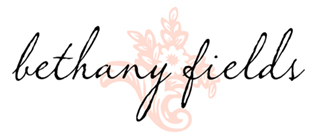Composition Tips – Armature
January 27, 2022 – Written by Bethany Fields
TodayI wanted to talk about some general art elements helpful to learn and utilize when designing your pieces. The first and foremost being composition. I will touch on this topic going forward when I’m designing my paintings so you can see these concepts in action.
So what exactly is composition?
As artists, you already have a lot of knowledge about this topic. Composition is first and foremost in our thoughts as we set out to render our paintings. But oftentimes what we *know* we don’t necessarily *practice*!
In our plein air work (and also studio), sometimes it is difficult to “see” these compositions without pointedly taking time to study and learn their effects on the viewer. When I go back and look at my pieces to study the placement and proportion of elements, the stronger paintings always have a more guided composition through something called an “armature.”

An armature is an underlying, unseen, supporting component.
In composition, we automatically have four lines present with which to work; those are the four edges of your paper/canvas. Everything we do within this “box” either helps or hurts our painting. Moving elements around, emphasizing (or de-emphasizing), altering colors, values, etc. are the tools we have to play with that help guide the public to our focal points and main ideas.
The following are a few compositional “armatures” I have used in my pieces.
The “S-curve” is common in landscapes with meandering rivers and paths. I love to employ this composition to lead the viewer into the painting, while allowing their eyes to follow the curve. Having this armature disappear before the far edges of the painting prevents the viewer from going in and heading right back out.
The fulcrum balances major masses by emphasizing differences, often in proportion or size. However this can also be achieved through exaggeration of values, saturations, color temperatures, etc. I like to employ this by de-emphasizing distant tree lines (making them smaller or larger than my reference shows), shifting values, and reducing (or brightening) chromatic levels.
The cruciform is an offshoot of the horizontals/verticals armature. This armature is more linked together however forming a “cross” shape. The cruciform doesn’t have to be centered and can be varied.
Please note: your paintings can have several armatures all at once. The important thing is to place your elements around your painting in a natural way, avoiding a gimmicky feel. When good composition is achieved, the average viewer doesn’t even know why they like your painting! Us artists have the inside track. 😉
CHALLENGE:
Take a moment and look at your paintings. Which ones are more successful? Have record of some that have sold or won awards or been in an exhibit? See if you can identify the armatures present! I would love for you to post these in the community section (or in our Facebook group). The more we learn to see these elements, the better we’ll be at creating them from the start.
xoxo,
Bethany
SAVE THIS POST TO PINTEREST





















[…] Previous […]